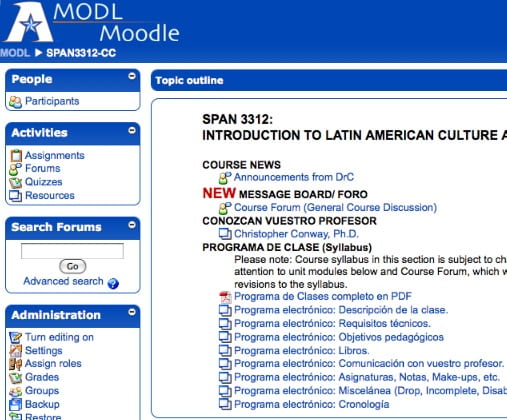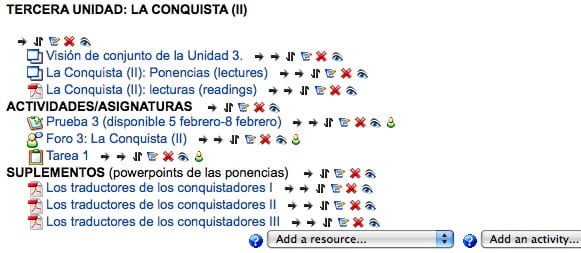My reading of the posts in this blog, and the links posted by the writers, got me to thinking and wondering about attention span.
What is the research on long attention span? I find we talk a lot about short attention spans when dealing with lectures. However, people of many ages seem to be able to attend for long periods of time when involved in other tasks: games, sports, creative writing, other kinds of writing, conversation, falling in love and obsessing on the person of one’s focus, mulling over an unsolvable situation – constantly and continually, obsessing on an idea — reading, writing, and talking about it, telling one’s own stories over and over … and over, watching a movie, playing guitar, doing research, partaking of an exciting discussion where we want to jump in.
So what is it about education that puts students to sleep and bores them?
I understand those who state that students do not listen to and absorb ideas in greater than 10-15 minute segments, when those ideas are produced in the form of a lecture. Most of us have experienced students’ nodding off or their attention wandering, as we closely watch what they are taking in when we are talking.
I have also noticed in my German Media on the Web class, taught in a computer classroom, that the computer seems to hypnotize students, and they must literally be pulled away in order to, as a group, attend to small group discussion, or to listen to anything I have to say, or to do a task like providing me with ideas about stereotypes of Switzerland which I can then put on the board for all to see. (My ideal German media on the web classroom: computers, break-out areas for small group or whole class interaction, chalk/white board for brainstorming, and screen for examples and shots of critical websites — also a latte machine.)
So what happens in the brain that makes students nod off or lose the thread when listening to lectures? What makes me nod off when listening to someone? What is it about a computer that hypnotizes students in a face-to-face class with computers in the classroom? And, on the other hand, what makes me attend again to a lecture (if the lecturer is not someone like the great Hans Kellner, who I understand mesmerized students when he was here)?
I’m coming to the conclusion that it has to do with what is happening in the brain and how the brain is processing ideas. It may have to do with tapping in to “expertise” and “experience,” and what we ourselves are bringing to the table. It may have to do with passive reception of authoritative knowledge versus bringing an attitude, an interest, a motivation, an agenda, or previous knowledge and understanding to the task of “listening to a lecture” – or a different frame of reference – different from that of the instructor – SCARY, or doing a different kind of task. It may have to do with choice. It may have to do with having a real reason for attending to ideas. A real reason for attending a face-to-face class. A real reason for attending an online course.
The following story is an example of what I’m talking about:
I recently attended a lecture, and I sat next to a student who was nodding off. I realized that the speaker was very knowledgeable, but that there wasn’t much that students without background knowledge in the field could grasp onto. I realized that I too was a bit bored by it all, until – until I heard the speaker say something that tapped into my understanding and previous knowledge, and that tapped into a new idea (for me) that I began having about the subject matter – an “aha” experience. After that, and for the rest of the lecture, I listened attentively, because I wanted to see if what he said continued to fit into this new framework or frame of reference that was happening in my mind. There was now a reason for listening to the lecture that far surpassed “getting information” from him or “politely thinking about the topic” – a real reason, my reason. The reason for attending had to do with me – not with him. I was having a new thought separate from him, I was enjoying that experience, and I was gleaning the “confidence” fallout from having what I considered a good idea, and I was enjoying making connections! Pleasure!
How do we get away from the fear and the “knowing” that students have about us – that if they say something we do not like, it will affect their grade? Some students don’t care. Others are quiet because of this. How do we avoid being the professor who said, “I don’t know what you think about this poem, [or theory or factoid], and I don’t care”? Even when students frustrate the heck out of us?
So learning theorists and scholars, am I on the right track? Is engagement something much more than attending and “being there” mentally? Is it passion-, desire-, even ego-driven? Is true learning perhaps totally passion-driven? Think of people like Einstein who let everything go in order to think all the time. Is it relationship? Do we hate to interact with profs who disdain us and therefore leave their content behind? Do we love to interact with profs who respect us and become energized and we change our majors because of them? Do we know the difference? (Yes, of course.) Do we as profs love to interact with students where there is mutual respect – they for us and we for them? If we disdain our students, do we sabotage learning? If they disdain us or are afraid of our grading them, how do we change that?
We guide them, compassionately, to the challenge. It is our prompts, our thinking, our interventions that make the difference. But it’s not the punitive and rigid intervention of the past. It has to be something different. Or?
Are these ideas too “affective?” I don’t think so, if we go beyond the surface of what is being said. After all, we are not organisms that are made up of three separate parts: body, mind, and emotions/spirit. We are whole organisms, whose affect plays a great part in our intellectual endeavor: what we choose, why, with whom we interact, and the environment in which we either develop our capacities or kill them, or something in between. “Create an environment in which people can thrive.” How do we do that for all students who are willing, no matter what their background?


